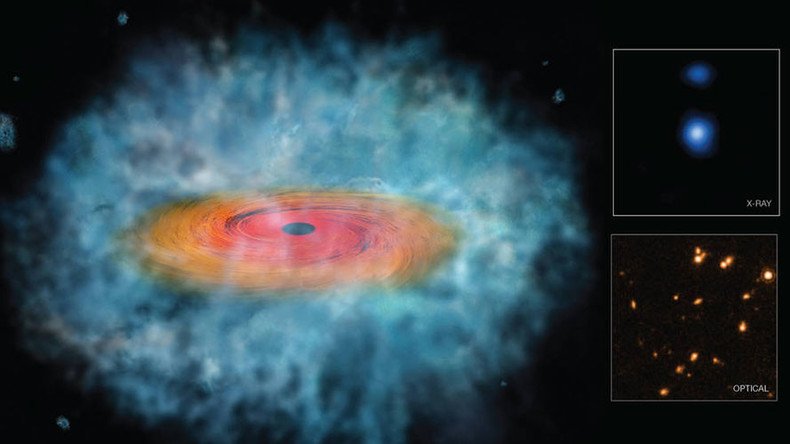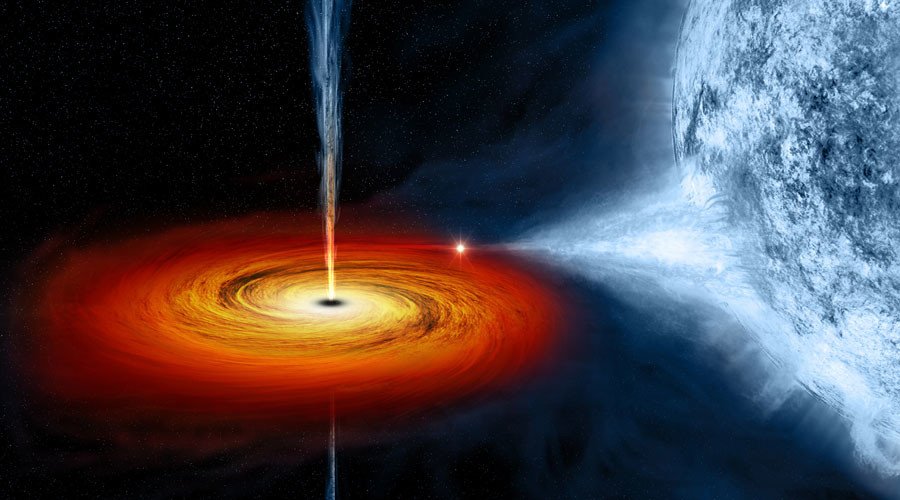Supermassive black holes born from collapsing gas clouds, study suggests (PHOTO)

Scientists appear to be closing in on the true origins of black holes, with a new theory suggesting the first massive energy eaters were not the remnants of dead stars but formed directly from collapsing gas clouds.
The mass of a supermassive black hole is equivalent to about 1 million Suns, and the intergalactic phenomena have a gravitational pull so strong that even light or a passing star can be swallowed whole.
As such, black holes are difficult to detect, while their exact formation is still subject to debate.
READ MORE: Supermassive black hole weighs in at 660mn times mass of Sun
A team of experts led by Fabio Pacucci of Scuola Normale Superiore (SNS), an institute in Pisa, have been studying black holes using data taken by the Hubble Space Telescope, the NASA Chandra X-ray Observatory and the Spitzer Space Telescope.
The researchers’ results are due to be presented in a paper about the early formation of the universe, and it adds a new theory to the process on how black holes were formed after the ‘Big Bang’.
The study examines whether the cosmic seeds of black holes may have been sown by gas clouds collapsing in space, rather than the destruction and combination of dying stars, report NASA.
“Our discovery, if confirmed, explains how these monster black holes were born,” said Fabio Pacucci.
READ MORE: Monster black hole in small galaxy group puzzles astronomers
“We found evidence that supermassive black hole seeds can form directly from the collapse of a giant gas cloud, skipping any intermediate steps.”

“There is a lot of controversy over which path these black holes take. Our work suggests we are narrowing in on an answer, where the black holes start big and grow at the normal rate, rather than starting small and growing at a very fast rate,” added Pacucci’s SNS colleague, Andrea Ferrara.
Experts believe they have discovered two of the gas ‘seeds’ from which black holes may have been formed less than 1 billion years ago.
“Black hole seeds are extremely hard to find and confirming their detection is very difficult,” said study co-author, Andrea Grazian.
“However, we think our research has uncovered the two best candidates to date.”
Plans are in place to use NASA’s James Webb Space Telescope to investigate the theory further and observe smaller, more distant black holes.
“As scientists, we cannot say at this point that our model is ‘the one,’” said Pacucci. “What we really believe is that our model is able to reproduce the observations without requiring unreasonable assumptions.”












